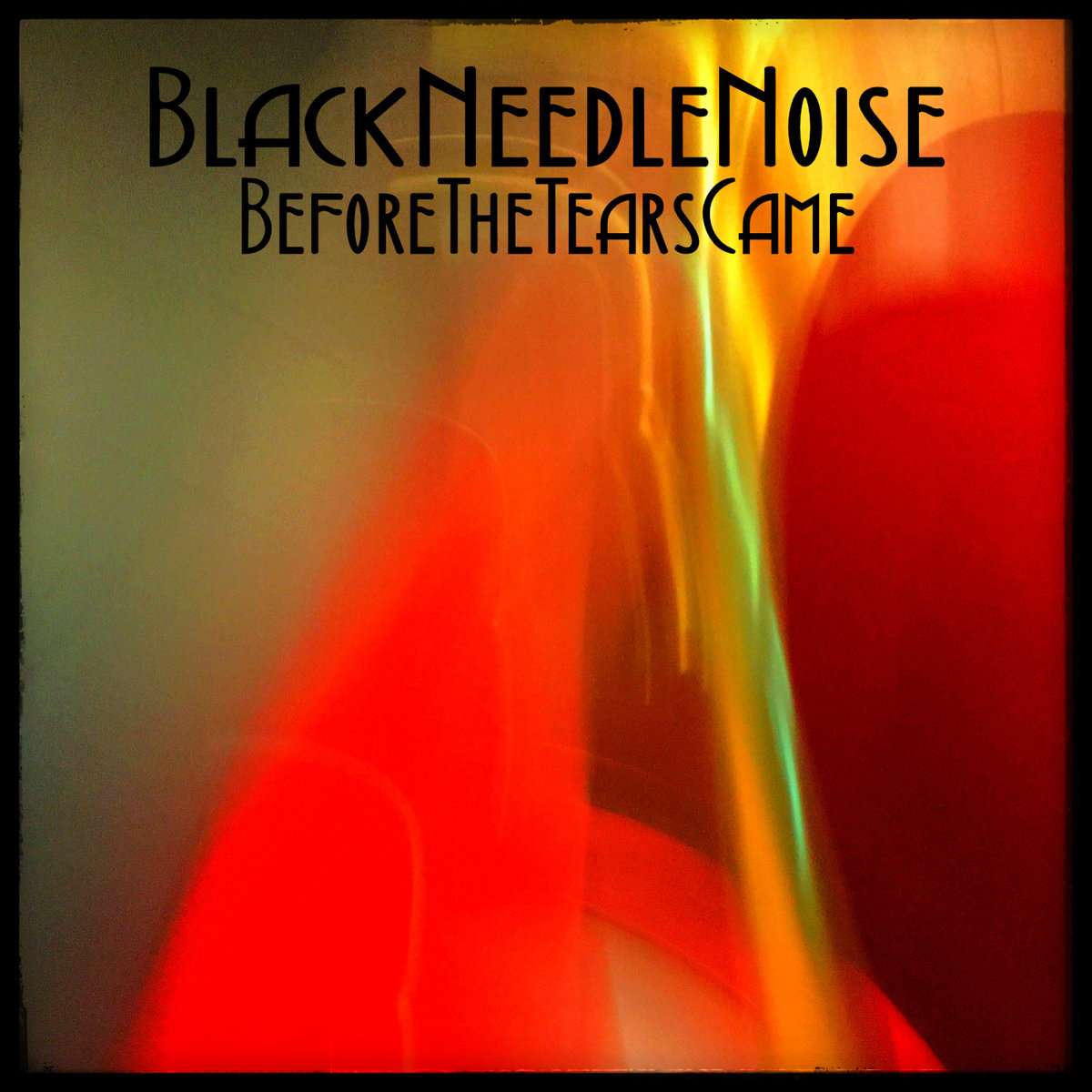Black Needle Noise
“Before the Tears Came”
Digital, 2016
https://blackneedlenoise.bandcamp.com
In this world of sad and bloody affairs, Black Needle Noise is an ideal means of escape through its imaginary screetching door. The very suggestion of “screetching” is not that of horror, but that of a ghostly noise, its cries and whispers adding to a beautifully balanced sequence of predominantly slow motions, all the more seductive and sensual.
 A brand new studio project started by the one and only John Fryer, Black Needle Noise once again gathers a number of unique voices for the occasion – ridding the songs of stereotypical (goth) gender roles; here all strengths are focused on “song” as “person”, the individuality poured into each track, pulling the listener into the very centre of each one’s emotional cyclone.
A brand new studio project started by the one and only John Fryer, Black Needle Noise once again gathers a number of unique voices for the occasion – ridding the songs of stereotypical (goth) gender roles; here all strengths are focused on “song” as “person”, the individuality poured into each track, pulling the listener into the very centre of each one’s emotional cyclone.
Black Needle Noise is not afraid to be “pop” either – these songs in fact dare to border its catchy areas, the sort that’s bravely confronted with its own “dark” side; the example of the opening “Wild Stone” (delivered strongly by the young perspective artist Zialand) is not that far from the ‘90s indie flavour added a slice of trip-hop’s pounding heaviness with a touch of Lynch.
“Vexation” deceptively heads into the rap territory only to grab the soul with a powerful gospel-like multivocal delivery by Jarboe, suggesting the sad and the lost albeit above it there drifts this gorgeous veil of comfort. Jarboe returns throughout the album for appearance on another song – “Human” which truly is a portrait of a fragile, troubled mind, its voices weeping from underneath the smooth, impenetrable layers of mist.
Ledfoot (Tim Scott of The Rockats and The Havalinas fame) adds his own dimension, with a pleasant vocal reminder – that of Gordon Sharp – in a demonically beautiful tone, serving as a perfect companion to an otherwise nightmarish and claustrophobic, yet soothing number that is “3 Steps Backwards”. A scene featuring an endless hall of mirrors, the whispers at its very end are downright effectively creepy. The choice of Andreas Elvenes (courtesy of Bitch Cassidy) for “Mourning Morning” creates a beautiful echo of the latter song, less morbid, more pleasantly calm with a deep resonant ambient backing.
Blues serves as the main leitmotif on the album and “Queen Of Dust” is its true spokesperson – many might eventually find “Queen Of Dust” somewhat confused to a number Depeche Mode never recorded. However, “dark americana” afficionado Antic Clay (Michael Bradley) is singing with a specific crooner’s timbre resulting in a number of the highest calibre – knowing exactly how much to use from its own space, painting a slow, spectacular scene. Another great example balancing out the avant-garde with a “pop” tendency, without the slightest trace of compromise.
Attasalina (of The Seraphim Rising project) appears in her passionate moment on “Messages By Dreams” – a song that at one tiny glimpse of a second betrays a melodic hint at “Donimo” but the very next scene is its own creation of a massive orchestral allure with temporary breaks augmented by a resonant, deep string of bass and incidental noise. The voice refuses to calm down, emotionally charged to the core.
Slightly more upbeat is “Behind the 4th floor”, featuring Elena Alice Fossi (of Kirlian Camera fame), eventually fitting in with the clubbing environment where there’s a possibility for remixed revisions that will further explore this particular song’s dance appeal. Similar ground is explored with “Naughty Girl” (again Fossi, only this time using her moniker Spectra Paris), joining in with a heavy pounding beat complemented further with error-like vocal skipping, digressing from turning into a “conventional” track.
“Dead Star” makes the most emotional moment on the album, in that it is Fryer’s personal tribute to David Bowie, our beloved starman who sadly and shockingly left this planet at the very start of what turned out to be a rather morbid year, 2016. Spiritual in its exotic breeze (at times I cannot help thinking of Monsoon), Betsy Martin (formerly of Caterwaul and presently of Purr Machine) appears in a siren-like lure against the distant-echoing early morning soundscape, the sunrise just about to pierce the eye with a merciless cry of light… which may reflect the mood of a great loss for many, still caught unaware.
The closer “I Face the Wall” nicely rounds off the whole album – its sound choreography pointing out to imaginary film’s closing credits that are rather in the form of a vaporising smoke than that of a standard list of “names” – although the one chosen for this last piece appears in the form of a certain Dr. Strangefryer; the main man underlining his masterpiece hard work with a final word.
While it suggests heaviness in large doses (with a feeling of catching the whole in one single grasp for breath), there is a sense of hope in the rebellious nature of “Before the Tears Came” – celebratory, reaching out into the fire and playing with it, without the fear of getting burned. “Before” in the album’s title may hint at a premonition of something sad and dying – but it is no less positive in terms of sensational – in the end, “tears” are not that present in the music, melancholy is – all hyperemotional. And to great effect.
Fryer’s contribution to many as producer is inevitable to mention – let alone his own studio projects; from the rather obscure Il Y A Volkswagens (formed with Eric Radcliffe) through to the more recent DarkDriveClinic (with vocalist Rebecca Coseboom), and especially his involvement with Ivo Watts-Russell in both, This Mortal Coil and its “idiot bastard son” called The Hope Blister, respect and admiration for Black Needle Noise only adds to the impeccable quality of the work – because, Fryer may hint at traces of the ghosts of his music past – Black Needle Noise being a logical step forward into the new (sweet) unknown – again choosing to work with a number of charismatic individuals, each a highlight in exploring the new soundscape as food for the soul. Thus “Before the Tears Came” is a deserved masterpiece for repeated listening. The virtual canvas reappears with its rich palette of thick pastel-coloured sounds every time you put it on.




